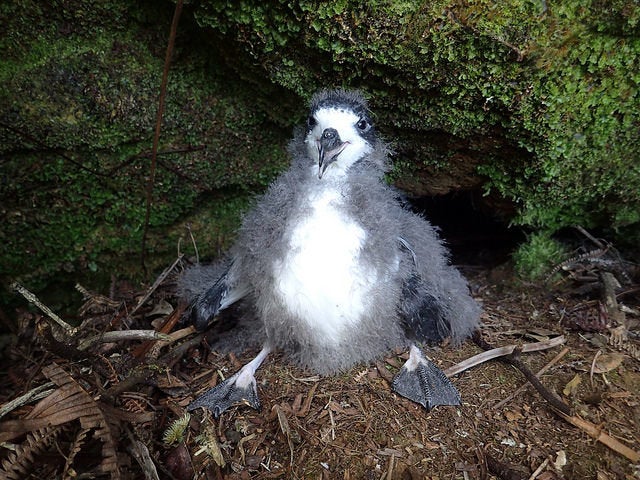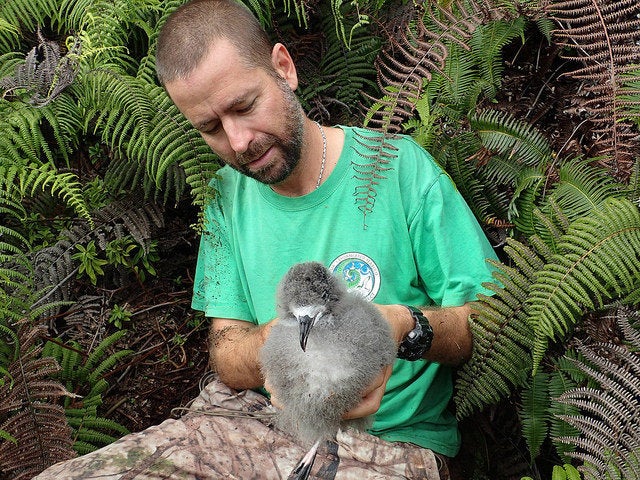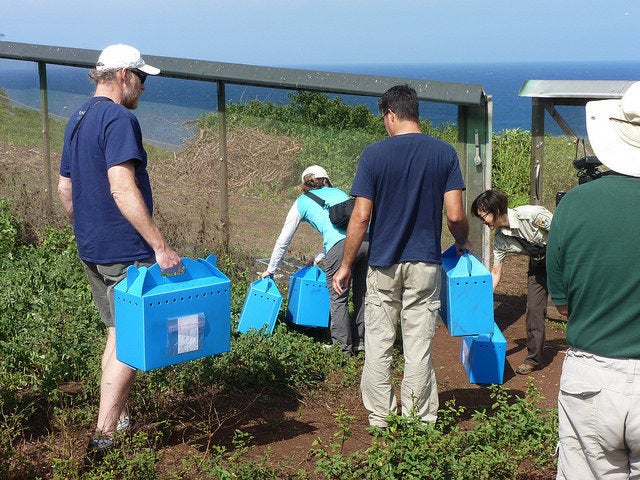On Monday, teams of scientists dropped onto the remote mountaintops of Kauai with the mission of snatching up endangered Hawaiian seabird chicks from their burrows.
Each of the juvenile Hawaiian petrels was "carefully removed by hand, placed into pet carriers, and hiked up to the tops of peaks where the helicopters picked them up."
The youngsters were seat-belted into the helicopter before taking off for a new, highly protected colony on Kauai's North Shore, where there is no threat of introduced predators, including cats, rats and pigs.
While it may sound like some sort of bizarre military-style kidnapping, the project was actually 30 years in the making and is all about ensuring a future for these federally protected birds.

Michael Mitchell of the U.S. Fish and Wildlife Service said in a press release that the translocation will help prevent the extirpation of the species from Kauai -- one of five main Hawaiian islands where the birds still breed.
“Petrels, like many other native Hawaiian species, are facing tremendous challenges with shrinking habitat and the onslaught of invasive species," Mitchell said. "Translocating the birds to Kilauea Point National Wildlife Refuge ensures that this colony of birds will be protected for our children and our children's children.”
Hawaiian petrels and Newell's Shearwater are the only two seabirds endemic to the Hawaiian Islands. They are found nowhere else on earth.

The birds' new colony is protected by a six-and-a-half foot tall, $300,000 state of the art, predator-proof fencing system.
Until the young birds fledge, human caretakers will hand-feed them a diet of fish and squid, as well as monitor their growth, according to a release. The petrels will then remain at sea for three to five years before returning to their new nesting ground as adults.

Scientists are also planning on translocating Newell's Shearwater, another ground nesting seabird, to this fenced-off bird paradise.
“We have seen a dramatic decline in the numbers of Newell's Shearwaters on Kauai in recent years, with an estimated 75 percent drop in the last 15 years,” Dr. André Raine of Kauai Endangered Seabird Recovery Project said in a statement. “The establishment of new colonies of that species using predator-proof enclosures at Nihoku, and possibly other locations in the future, is an important management tool to help reverse this decline.”
Take a closer look at Monday's translocation in the video below:
Also on HuffPost:

